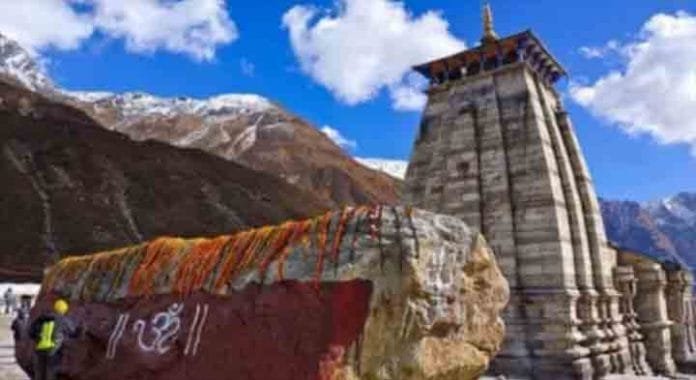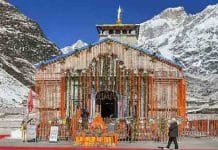INVC News
Haridwar : The incident surrounding the protection of the Kedarnath temple during the devastating flood in Uttarakhand in 2013 is often regarded as a miracle. Despite the widespread destruction caused by the flood, the temple managed to survive due to the presence of a large rock, now known as Bhim Shila , which came to rest behind it.
During the flood, the temple was at risk of being engulfed by the rushing water, sand, rocks, and mud. However, when the massive rock positioned itself behind the temple, it acted as a barrier, dividing the force of the flood and preventing it from entering the temple premises. This fortunate occurrence saved the lives of approximately 300-500 people who had sought shelter inside the temple.
The presence of the rock, and its role in protecting the temple, has led to various beliefs and interpretations. According to one legend, the Bhim Shila is said to have been initially placed by the Pandavas, the mythical heroes of the Hindu epic Mahabharata. It is believed that Bhima, one of the Pandava brothers, had chased Lord Shiva (referred to as Bhole Baba or Kedar Baba) at this location, and the rock symbolizes his act of saving Lord Shiva’s temple by burying his mace. This association with Bhima is why it is called Bhim Shila.
Even today, the rock stands behind the Kedarnath temple, near the samadhi (final resting place) of Adi Guru Shankaracharya, and it is worshipped by people. The exact dimensions of the rock and how it came to rest at a specific distance behind the temple remain unknown. Some attribute this event to the divine intervention of Lord Shiva or Guru Shankaracharya, while others consider it a coincidence.
The protection of the Kedarnath temple by the Bhim Shila continues to be a source of wonder and awe for many people, including devotees and sadhus (holy men). It is regarded as a symbol of the temple’s resilience and a reminder of the miraculous events that occurred during the catastrophic flood.














